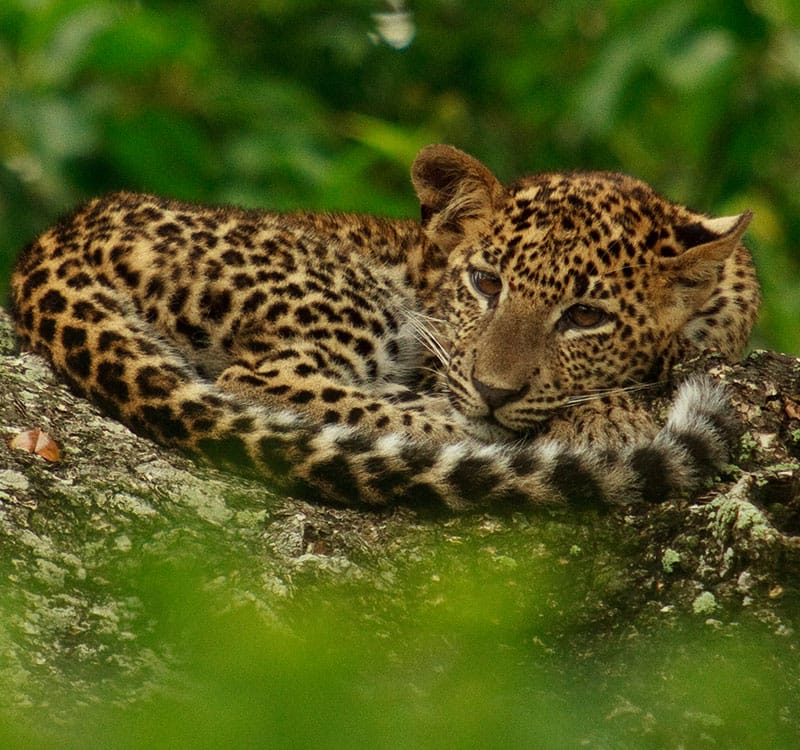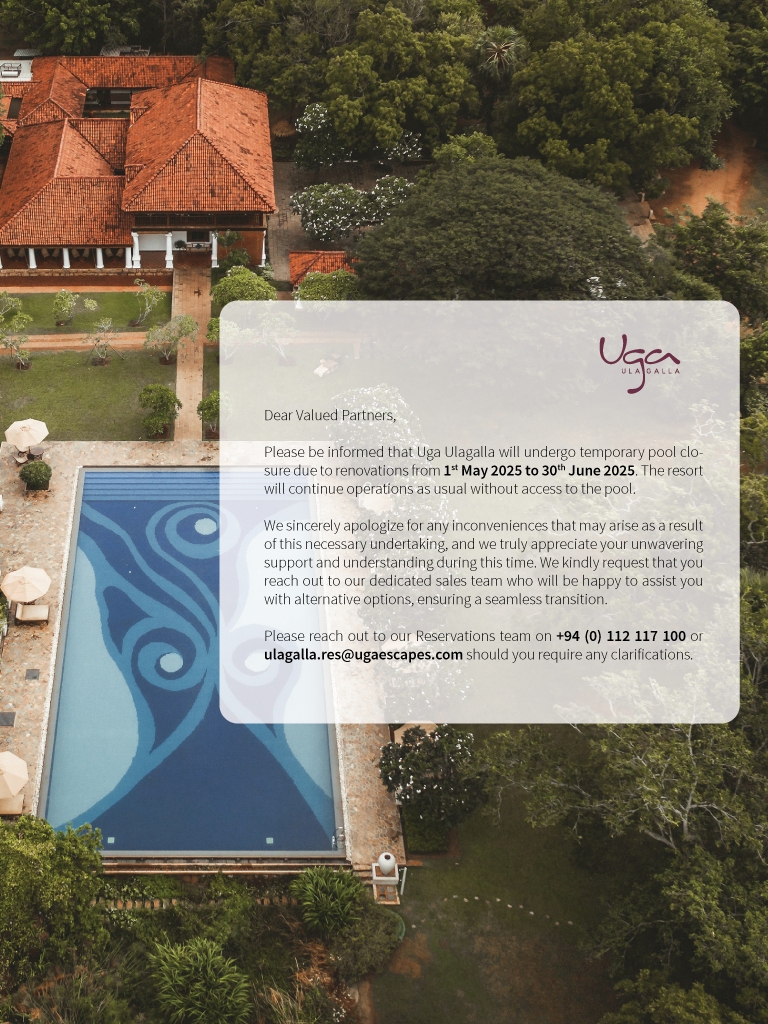Yala National Park
Yala, Sri Lanka: A Must-Visit Safari Destination
Yala National Park (otherwise known as Ruhuna National Park) is one of Sri Lanka’s must-sees. Located to the south east of the island, this exceptional game reserve is Sri Lanka’s most popular for very good reason. Thought to be home to the greatest density of leopards per square kilometre in the world, Yala covers an area of 1,260 square kilometres and is divided into five blocks. Block I is the most visited portion of the reserve and the most rewarding destination for a leopard safari. Leopards are usually elusive, though in Yala, sightings of them are extremely good – you might see them basking in the sun atop rocky outcrops, in trees, crossing tracks and beside waterholes. Alongside leopards, there are also sloth bears, Asian elephants, deer, monkeys, buffalo and many species of birds. If you’re really set on seeing leopards, Yala will offer you Sri Lanka’s best opportunity.
History of Yala
Yala is one of Sri Lanka’s oldest national parks and was designated a wildlife sanctuary as far back as 1900 though it wasn’t until 1938 that it was established as a national park. Right in the heart of Yala sits the Buddhist temple Sithulpawa, and this former monastery is thought to date back 2,000 years. At one time, the monastery is thought to have housed 12,000 inhabitants, and today, it remains an important temple visited by pilgrims across Sri Lanka. Other significant cultural sites in the vicinity include Kataragama and Magul Maha Vihara.
Location
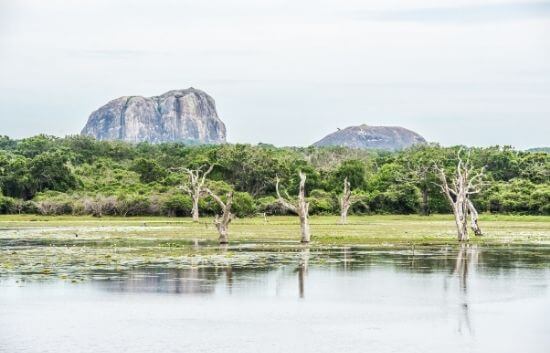
Yala National Park is located in the south east of Sri Lanka around 20km southwest of Tissamaharama. Part of the reserve borders the Indian Ocean. It takes less than 10-minutes to reach the entrance of the reserve from Chena Huts, which sits in the park’s wildlife-rich buffer zone. Colombo is around a 300-kilometre drive away, which takes five hours.
Topography of Yala
Yala is located in the dry zone of the island and is dominated by scrubby bush and monsoon forests. The reserve is predominantly flat yet punctuated by brackish lakes, grasslands and vast granite outcrops whilst sand dunes characterise its coastal boundary. The park sits in the semi dry zone of the island and receives rainfall from the north easterly monsoon.
Game Drives in Yala
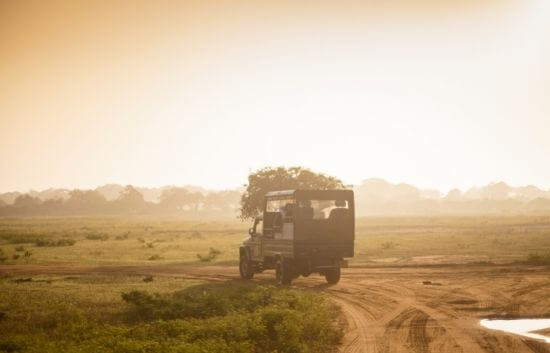
Yala National Park is a year-round destination for wildlife safaris. The most rewarding time to visit is during the May to September dry season, and in early October, when the onset of the drought and die-back of vegetation heightens wildlife-viewing. The north eastern monsoon brings rainfall from October/November until January, after which the reserve is much lusher and green. Sloth bears love feasting on the intoxicating fruits of the palu trees in season between May and July, and therefore sightings are optimal at this time. The best wildlife sightings are early morning and evening, so be prepared to wake up early.
Wildlife in Yala
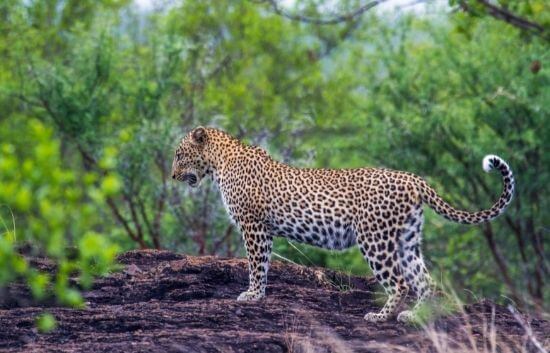
Yala National Park is the best reserve in Sri Lanka for seeing a wide variety of wildlife, and in particular leopards, elephants and sloth bears. There are approximately 215 bird species resident in the park, including seven endemics, along with 44 mammals. The park is divided into five blocks of which block I (where most game drives take place) is renowned for having the greatest density of leopards per square kilometre in the world. Many of the younger males have grown so used to their dominance within the reserve and the jeeps that seek them out that they saunter lazily along tracks and sunbathe on rocky outcrops in full view. As such, Yala is Sri Lanka’s most popular national park, and receives a large number of visitors. Elephants, sambur deer, jackals and langur monkeys also play leading roles in the park, as do elusive sloth bears – small, scrubby looking bears that love to feast on the fruits of the palu tree when in season in May and June. Bird life is also a highlight, and some endemics include the Sri Lanka grey hornbill, the Sri Lanka wood pigeon, the brown-capped babbler and the blue-tailed bee-eater. The rare Black-necked Stork and the greater adjutant are other significant residents of the park, which is also visited by many migratory species.
Guide to Yala
Yala comprises five blocks, and while most game drives take place in Block I (where wildlife sightings are arguably the most rewarding), game drives can and do occur in other blocks within the reserve. This is much more likely in September and October (at the height of the dry season) when Block I is often closed to visitors for around six weeks to allow animals unrestricted freedom of movement. Chena Huts is very conveniently located near the main Palutapana entrance of Yala, and it takes just minutes to reach the ticket desk from the hotel. Once inside, the network of tracks within the reserve are extensive, and our drivers are experienced in seeking out some of the more off-beat areas that avoid the crowds.
Which is the best national park in Sri Lanka?
Sri Lanka’s 26 national parks are exceptional places for wildlife spotting and offer very different wildlife experiences. Two standout national parks in Sri Lanka are Yala and Wilpattu due to the sheer variety of resident wildlife. You can tick off Sri Lanka’s Big Three – leopards, elephants and sloth bears in one game drive. Yala’s dense leopard population has made it a world standout, however sightings of leopards in Wilpattu are also very strong throughout the year. Sloth bears may also be seen in both reserves, particularly in May and June. Elephants are resident in all of Sri Lanka’s national parks, however, Minneriya and Uda Walawe are two of the best reserves for sighting large herds of elephants. Birding enthusiasts will be drawn to Wilpattu National Park, as well as Yala and Bundala.
Visiting Yala National Park
Chena Huts offers superb game drives into Wilpattu National Park hosted by an in-house naturalist. Packages include a tracker, Yala National Park entrance fees, on-board snacks and refreshments, wildlife viewing equipment, and a seafront post-safari drinks reception. The location of the hotel so close to Yala’s main entrance and within the buffer zone of the reserve, means that it takes next to no time to enter the park. Since this is Sri Lanka’s most popular game reserve, it can get very busy, particularly on weekends. However, our team of naturalists are experienced in taking guests on lesser-visited routes around the reserve.
What to wear on a jeep safari in Sri Lanka
Wear comfortable, breathable clothing in neutral, khaki and brown hues. It’s also a good idea to layer up since it can be cool in the early hours of the morning and then very hot and humid later in the day. We would also recommend applying sun cream and wearing hats.
